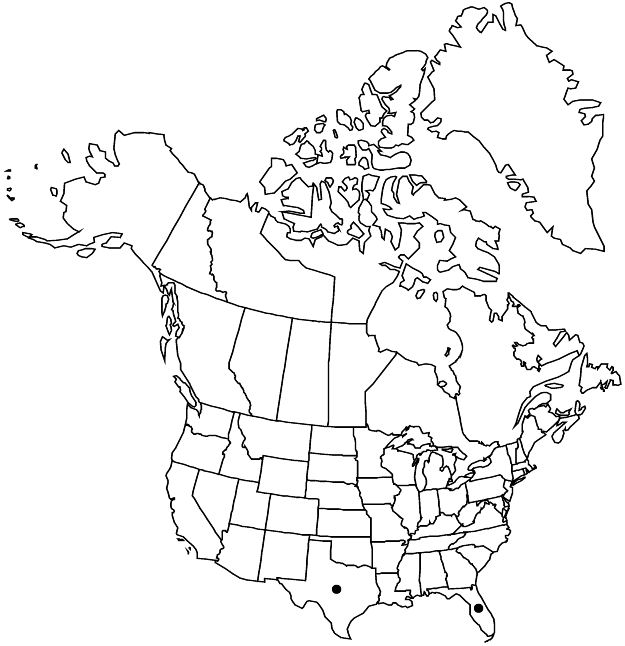Difference between revisions of "Croton humilis"
Syst. Nat. ed. 10, 2: 1276. 1759.
FNA>Volume Importer |
FNA>Volume Importer |
(No difference)
| |
Revision as of 18:17, 24 September 2019
Shrubs, 3–8 dm, monoecious. Stems much branched, stellate-hairy, viscid. Leaves not clustered; stipules 2–5 stipitate glands, to 0.5 mm; petiole 0.7–3(–5) cm, 3/8–5/8 leaf blade length, glands absent at apex; blade ovate to oblong, 1.5–8 × 1–2(–5) cm, base rounded to subcordate, margins entire to minutely glandular-denticulate, apex abruptly acute to acuminate, both surfaces pale green, abaxial densely stellate-hairy, adaxial tomentose, glabrescent. Inflorescences bisexual or unisexual, racemes, 3–7 cm, staminate flowers 20–35, pistillate flowers 2–6. Pedicels: staminate 3–4 mm, pistillate 1–2(–3) mm. Staminate flowers: sepals 5, 3–4 mm, abaxial surface stellate-hairy; petals 5, spatulate, 3–4 mm, abaxial surface glabrous except margins ciliate basally; stamens 15–35. Pistillate flowers: sepals 5, equal, 4 mm, margins entire, sessile- or shortly stipitate-glandular, apex incurved, abaxial surface stellate-hairy; petals 0 or 5, white, subulate, 1 mm; ovary 3-locular; styles 3, 3–5 mm, 4-fid, terminal segments 12. Capsules 4–5 × 4 mm, smooth; columella apex with 3 rounded, inflated lobes. Seeds 3–4 × 2.5–3 mm, shiny. 2n = 20.
Phenology: Flowering year-round.
Habitat: Hammocks, thickets, disturbed areas.
Elevation: 0–50 m.
Distribution

Fla., Tex., e, se Mexico, West Indies.
Discussion
Croton humilis is a mainly West Indian species extending from southernmost Florida (Collier and Monroe counties) to the Bahamas, Cuba, Hispaniola, Jamaica, and Puerto Rico, and up the Caribbean coast of Mexico to southernmost Texas (Cameron, Hidalgo, Starr, Willacy, and Zapata counties). Texas plants have more stamens (30–35) than Florida plants (15–20).
Selected References
None.